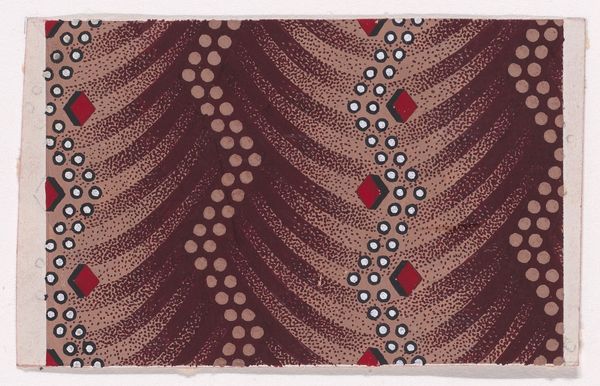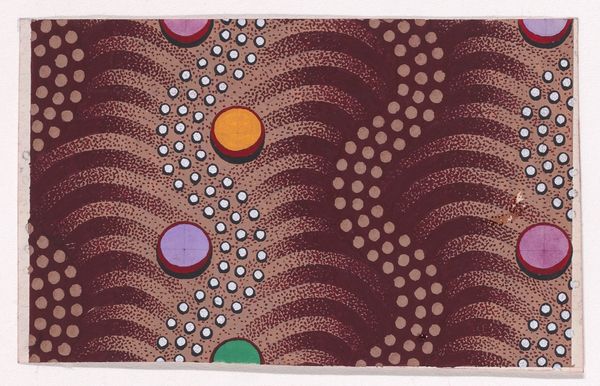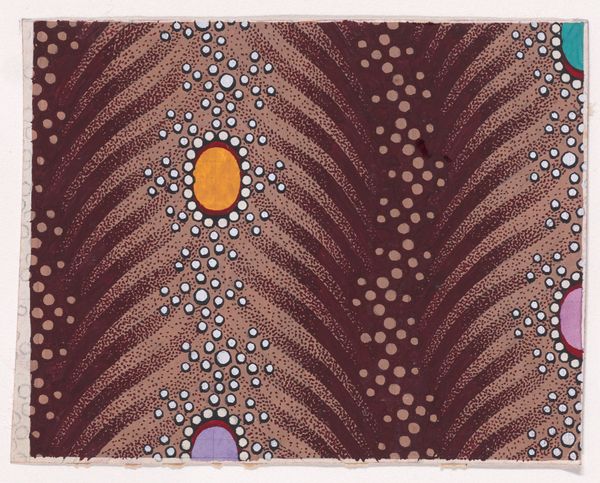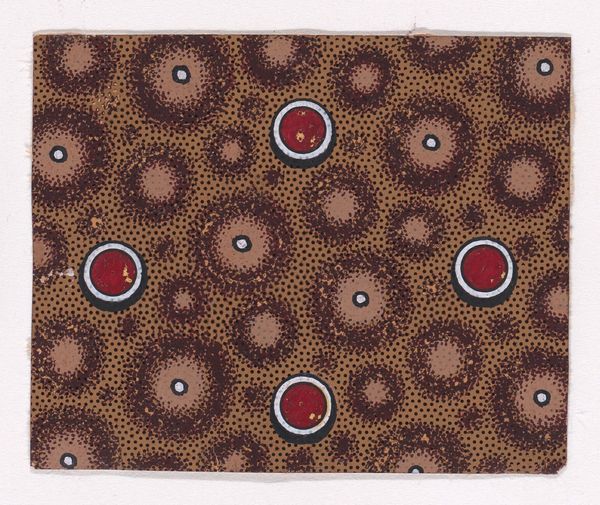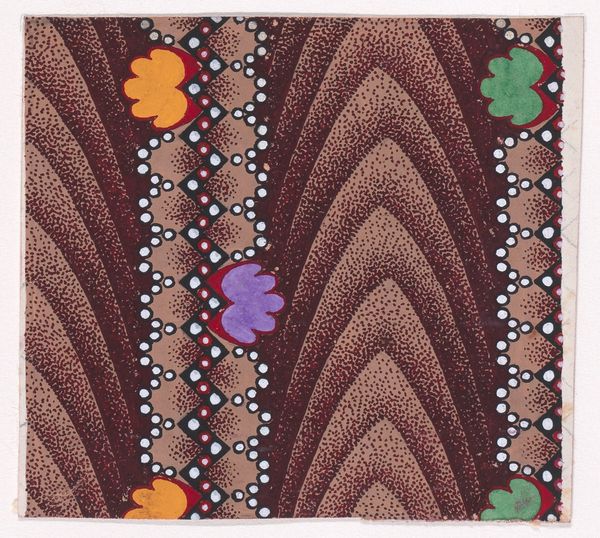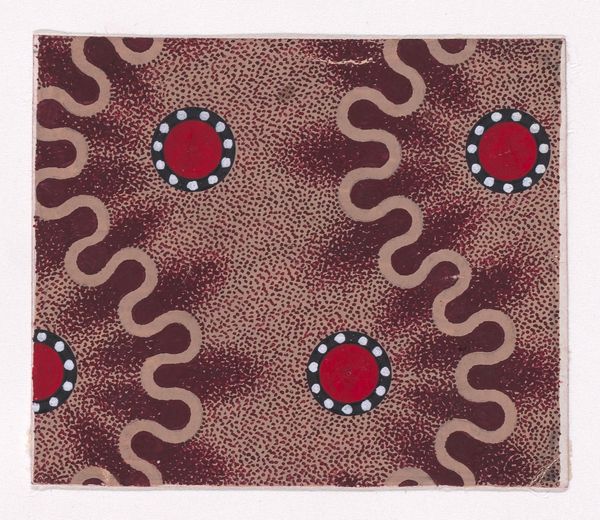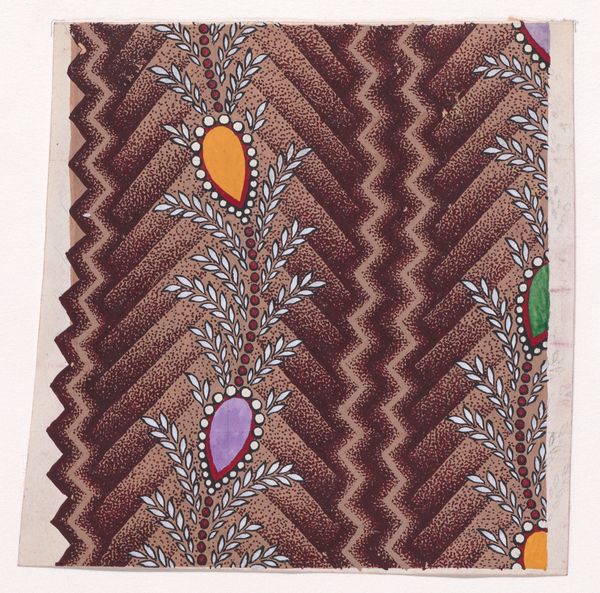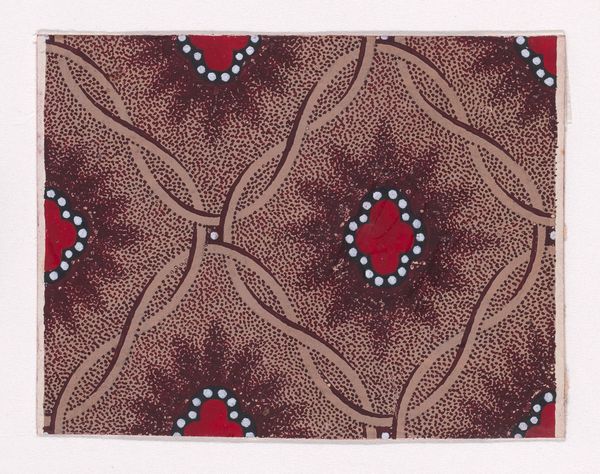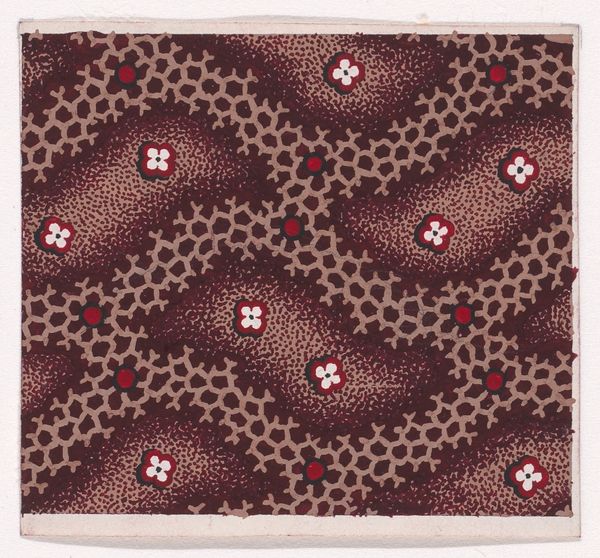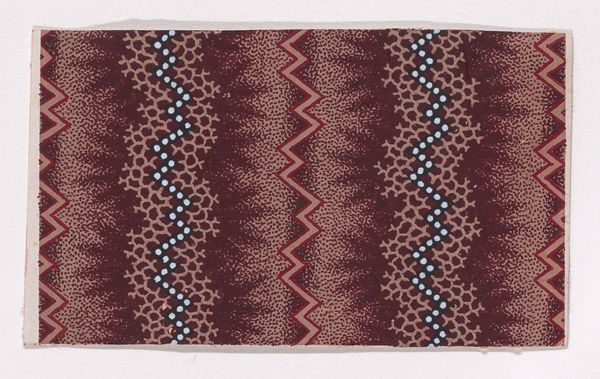
Textile Design with Alternating Vertical Rows of Lens Shapes and Rows of Ovals and Pearls Framed by Undulating Garlands of Pearls 1840
0:00
0:00
drawing, print, textile
#
drawing
# print
#
textile
#
geometric
#
textile design
#
decorative-art
Dimensions: Sheet: 2 5/16 × 3 11/16 in. (5.9 × 9.3 cm)
Copyright: Public Domain
Curator: This is a textile design created around 1840, currently residing at the Metropolitan Museum of Art. The piece, rendered through drawing and printing techniques, is attributed to an anonymous hand. Editor: It feels so contained, doesn't it? All those little dots, almost pointillist, constrained within firm, geometric structures. There's something deeply ordered about it. Curator: Order is certainly present in its materiality! Notice how the vertical lines work as a warp, defining the structure against which the more flamboyant decorative elements play. These lines suggest the loom's mechanics and perhaps even reflect the regimentation of the textile production process itself. Editor: Speaking of flamboyance, I'm immediately struck by how these bright orbs disrupt the linear monotony. The juxtaposition between those rows—the lens shapes, the ovals, the pearl garlands—creates a push-pull effect, doesn't it? There is some cultural context we can read here about femininity and status of the period reflected by these choices in representation and technique? Curator: Exactly. Pearls and jewels have historically signified wealth and status. This design subtly elevates textile production to fine art, incorporating traditionally luxurious signifiers into an everyday item and challenging their associated hierarchies. Editor: It's fascinating to consider who would have worn a textile made from such a design, its display of status, especially given that the design is anonymous. What statement does this textile make about the person wearing it, and how complicit are they in existing societal structures and gendered expectations of display and domesticity? Curator: The lack of attribution underscores an inherent tension. Textile design, especially in this era, was often deemed 'craft,' performed by often unacknowledged labor. The anonymity highlights this tension between individual artistic expression and industrialized, often nameless, making. Editor: It makes one consider the ethics of adornment and labor too, particularly when observing with our 21st-century eyes. Even something seemingly beautiful carries layers of complicated social and political information! Curator: Precisely. By examining its structure and social framework we begin to appreciate the silent stories it carries from its means of fabrication, labor conditions and status symbols of its time. Editor: Looking at this piece now, knowing the historical context of how it was made adds another layer to its design, the history of societal factors are woven into this design’s threads!
Comments
No comments
Be the first to comment and join the conversation on the ultimate creative platform.
